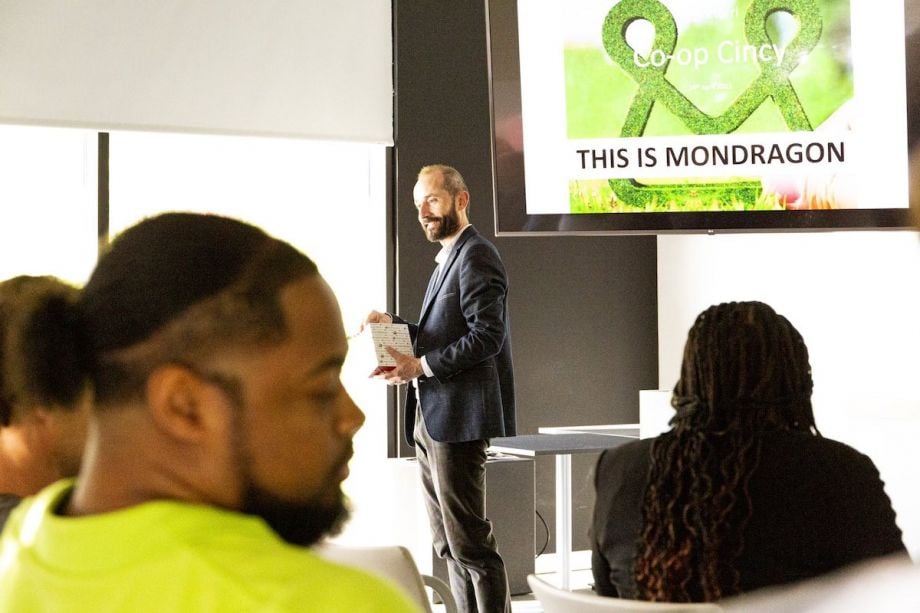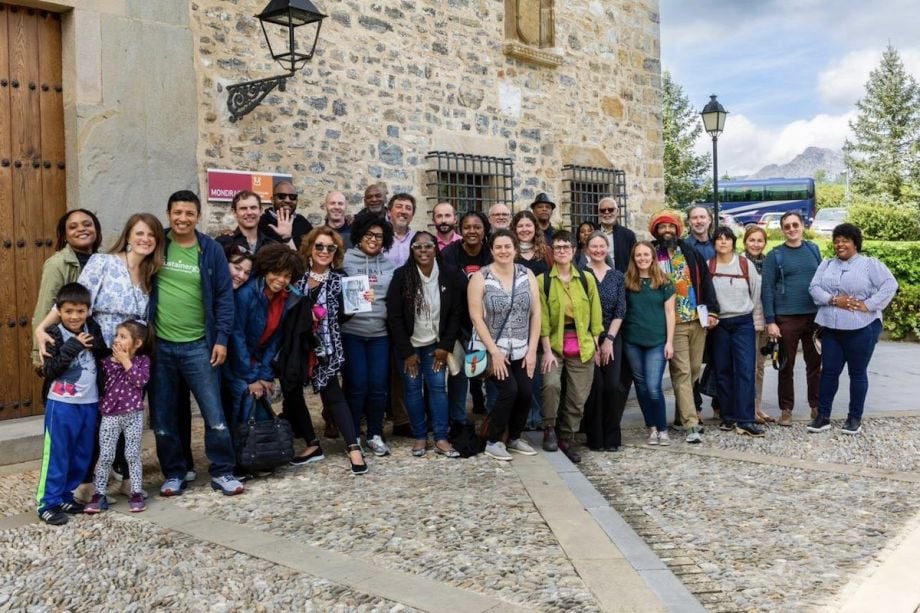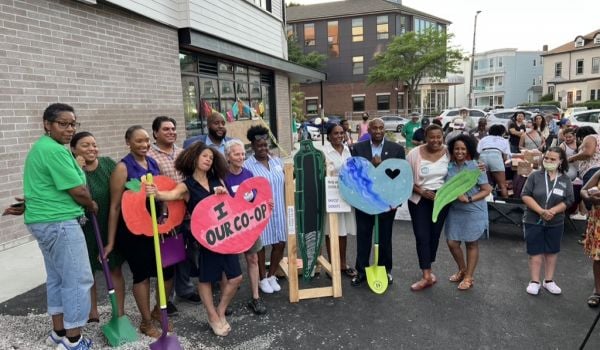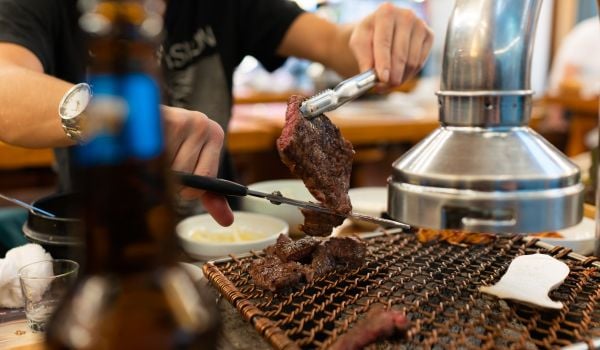For his 91st birthday three years ago, Bob Moore, the namesake behind the ubiquitous Bob’s Red Mill Natural Foods brand, surprised his employees during a celebration of his 91st birthday. He unveiled an Employee Stock Ownership Plan that, as of April that year, turned his roughly 600 employees into co-op owners of a company that generated more than $50 million in annual sales in 2018.
While Bob’s Red Mill might be one of the most high-profile examples of an employee-owned business in the U.S., it’s far from the only one—especially in Ohio.
For more than a decade, Co-op Cincy has been working to both create new cooperatively-owned businesses and help current businesses transition to co-op models across the greater Cincinnati area. A central element of this work has been providing employee-owners-to-be access to loans in order to finance the necessary stock purchases behind the model. In total, the nonprofit union co-op incubator’s network now includes 16 worker-owned businesses.
Both Co-op Cincy’s inception and its work today has been, and continues to be, inspired by the success of Mondragon, a Spanish co-op started in 1956. A network of 95 co-ops that employ 80,000 people in Spain’s Basque region and beyond, Mondragon’s network is “one of the nation’s largest sources of paychecks,” according to the New York Times.
In April, the group had a chance to tour the model that inspired their own; now, they’ve returned with a list of action items. Their goal: To better understand how Ohio co-ops could get to Mondragon’s level.
“We’ve laid a base, where can we go from here?” asks Ellen Vera, Co-op Cincy’s co-founder and co-director. “How do we get to that next level?”
A Mondragon in the Midwest
In 2009, retired railroad mechanic Phil Amadon heard about the launch of the 1worker1vote network of unionized worker co-ops. Jointly launched by the United Steelworkers and Mondragon USA, the project aimed to spread Mondragon’s model of democratic worker-ownership combined with union membership.
It wasn’t his first time hearing about Mondragon; back in the ‘80s, delegations sent to Spain by Cincinnati’s Intercommunity Justice and Peace Center had reported back to Amadon and other local organizers about the Mondragon federation’s success with worker coops connected to the labor movement.
Amadon reached out to a few other local organizers, and the group began an intense study of the Mondragon model. In 2010, the group decided to launch their own organization – one which would eventually become Co-Op Cincy, and which would be the first U.S. union co-op explicitly modeled after Mondragon. By 2012, the group had launched its first union co-op, Our Harvest food hub.
Since then, they have loaned more than $1 million to co-op businesses, trained more than 1,300 people each year on worker ownership, and have more than 100 people employed through their network co-ops, 75% of which are people of color and 66% of which are women.
“In the beginning, we didn’t really have a roadmap and sometimes [the process] took a long time,” Vera explains. Now they have Co-Op U, a 14-week course that helps teams develop a worker-owned business, covering everything from market viability to governance structures.
After the program is done, Co-op Cincy still helps with ongoing wraparound technical assistance. “I think that’s one thing that’s really unique about us compared to maybe other business incubators is that… we truly wrap them in a full-service technical system,” Vera says. Co-op Cincy meets with program graduates once every week or two. “Once the co-op is up and running, we help them build that culture through team meetings and facilitate workshops on things like communication and conflict management skills, financial business literacy… and [other] challenging things they’re experiencing at that time,” she adds.
As Next City reported last year, Co-op Cincy also helps current businesses transition to co-op ownership models, working with at least three worker-owners but ideally more with an explicit goal of expanding that number over time built into the new co-op’s bylaws.

(Photo courtesy Co-op Cincy)
Scaling up
Mondragon’s origins, created by a poverty-stricken ethnic minority facing extreme economic inequality and political polarization in the wake of the Spanish Civil War, means its model has been particularly inspiring to community organizers and labor activists in this Rust Belt city, where more than 40% of children live below the federal poverty line.
By creating an interconnected network of cooperative enterprises that pooled their resources, locals developed stable jobs for themselves and built resilience against future economic downturns. The Basque region, which has a comparable population size to Greater Cincinnati, now has the country’s lowest levels of poverty and unemployment.
“Our goal in 50 years is to have completely gotten the Greater Cincinnati region to have the lowest levels of poverty, the lowest levels of inequality anywhere in the United States,” Co-op Cincy co-founder Kristen Barker told the city council late last month.
The first time Co-Op Cincy’s co-founders went to Mondragon was around 2013. “It was so powerful to actually see it for ourselves,” Vera recalls. The group was slated to return in 2020, but the pandemic put a pause on that until April when Co-Op Cincy finally completed the journey. They were joined by worker-owners from several of their co-ops as well as members of Co-Op Dayton, another co-op incubator.
In total, about 40 Ohioans from various sectors – from faith leaders to philanthropists to political officials – joined the contingent to northern Spain. The cohort toured and heard from several cooperatives in Mondragon’s network (including a semiconductor supplier, a supermarket chain and an industrial catering company), spoke with local business and economic leaders, and visited a campus of Mondragon University. When they returned to Ohio, they did so with a list of nearly 30 action items to implement in their own communities.
“I’ve always been a big advocate of employee ownership,” Tim Retting, CEO of InTrust IT, said in a video produced by Co-op Cincy. His company implemented an Employee Stock Ownership Plan in 2019 and follows an open-book management style.
In seeing how several larger companies in Spain had scaled their operations, “I really got some great ideas around the governance of my company and how exactly to get my employees more involved in the decision-making and the operation of my company,” he says.
A central takeaway for Vera was the importance of raising awareness. “Our community leaders, whether they be from city government to the faith community to the higher education community, [can] make sure people know that this is a way that we can plan and create our economy,” she says.
Indeed, at the end of May, members of the delegation presented their takeaways to the Cincinnati City Council’s Healthy Neighborhoods Committee, noting that other U.S. city governments from Minneapolis to Madison had recently made investments in co-ops. In addition to requesting $400,000 from the city for business coaching, technical assistance and a loan fund, Co-op Cincy urged the city to create a worker-owned business delegation and prioritize worked-owned businesses when awarding city contracts.
Amaha Sellassie, co-executive director of the group’s sister organization Co-op Dayton, also found the Mondragon trip to be inspiring. “They breathe the air of cooperation and stress solidarity. It’s not about individualism, it’s about how we all have a shared future,” he says.
Co-op Dayton launched in 2016 largely in response to food desert conditions on the west side of the city. Sellassie says that corner stores and dollar stores dominated, leaving residents with a lack of access to fresh fruits and vegetables.
“The powerful thing about co-ops is that when there’s a gap in the market, when services aren’t being provided in the community, co-ops are the easiest way to fill that gap,” he says. “If we would have waited for a big box store, that never would have happened. If you’re waiting for even the city to [act], it never would have happened. It came out of self-determination.”
Sellassie stresses that Mondragon’s model isn’t a cookie-cutter solution. Instead, the trip was about understanding underlying principles and how those can be created and applied in Ohio.
“We have to manifest a contradiction to the status quo so that others know it’s possible,” he says. “Our work should be so compelling that it invites others to join us so we can walk together.”
Due to an editing error, an earlier version of this story mistakenly referenced poverty rates in Cleveland rather than Cincinnati. We regret the error and have replaced the reference.

Cinnamon Janzer is a freelance journalist based in Minneapolis. Her work has appeared in National Geographic, U.S. News & World Report, Rewire.news, and more. She holds an MA in Social Design, with a specialization in intervention design, from the Maryland Institute College of Art and a BA in Cultural Anthropology and Fine Art from the University of Minnesota, Twin Cities.
Follow Cinnamon .(JavaScript must be enabled to view this email address)
















